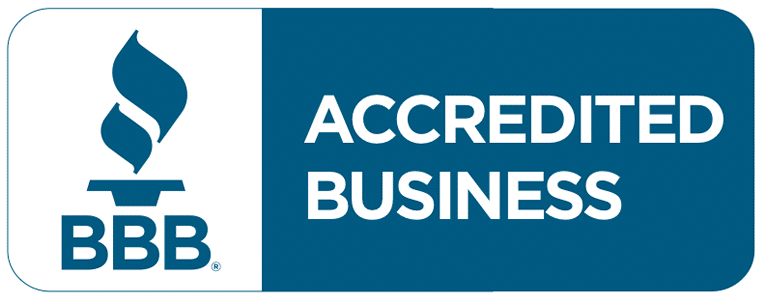Dealing with a broken garage door can be incredibly frustrating. It can disrupt your daily routine, pose a security risk, and even endanger your safety. If you’re wondering how to fix a broken garage door, you’re not alone. Many homeowners face this issue and seek effective solutions.
In this guide, we will cover the most common problems that cause garage doors to malfunction and provide clear, step-by-step instructions to help you fix them. We’ll discuss everything from identifying the problem to performing necessary repairs safely.
Addressing a broken garage door promptly is crucial. A malfunctioning door can compromise the security of your home, making it easier for intruders to gain access. Additionally, a broken garage door can pose significant safety risks, such as the door suddenly falling or failing to open, potentially causing injury. Fixing these issues promptly ensures that your garage door operates smoothly, maintaining both the safety and convenience of your home.
How to Fix a Broken Garage Door: Diagnosing the Problem
Dealing with a malfunctioning garage door can be stressful and inconvenient. If you’re wondering how to fix a broken garage door, the first step is accurate diagnosis.
Common Issues with Garage Doors
- Broken Springs
- One of the most common issues with garage doors is broken springs. Garage doors rely on either torsion or extension springs to lift and lower the door. Torsion springs are located above the door, while extension springs are found on either side of the door. These springs can wear out and break over time due to the constant tension they are under. When spring breaks, you may hear a loud bang, and the door may become extremely heavy, making it difficult or impossible to lift manually.
- One of the most common issues with garage doors is broken springs. Garage doors rely on either torsion or extension springs to lift and lower the door. Torsion springs are located above the door, while extension springs are found on either side of the door. These springs can wear out and break over time due to the constant tension they are under. When spring breaks, you may hear a loud bang, and the door may become extremely heavy, making it difficult or impossible to lift manually.
- Malfunctioning Opener
- The garage door opener is a motorized device that controls the opening and closing of the door. Several issues can cause the opener to malfunction, including electrical problems, worn-out gears, or issues with the remote control or wall switch. Sometimes, the opener’s sensors, which are designed to prevent the door from closing on objects or people, can become misaligned or dirty, preventing the door from operating correctly.
- The garage door opener is a motorized device that controls the opening and closing of the door. Several issues can cause the opener to malfunction, including electrical problems, worn-out gears, or issues with the remote control or wall switch. Sometimes, the opener’s sensors, which are designed to prevent the door from closing on objects or people, can become misaligned or dirty, preventing the door from operating correctly.
- Misaligned Tracks
- The tracks on either side of the garage door guide its movement. If these tracks become misaligned, the door can get stuck, operate unevenly, or even come off the tracks entirely. Misalignment can occur due to accidental impacts, loose hardware, or gradual wear and tear. It’s crucial to address this issue quickly to prevent further damage to the door or its components.
- The tracks on either side of the garage door guide its movement. If these tracks become misaligned, the door can get stuck, operate unevenly, or even come off the tracks entirely. Misalignment can occur due to accidental impacts, loose hardware, or gradual wear and tear. It’s crucial to address this issue quickly to prevent further damage to the door or its components.
- Worn-out Rollers
- Rollers help the garage door move smoothly along the tracks. Over time, rollers can become worn out or damaged, leading to noisy operation and jerky movements. Depending on the type of rollers your door has (nylon or steel), they may require periodic lubrication or complete replacement if they are worn out.
- Rollers help the garage door move smoothly along the tracks. Over time, rollers can become worn out or damaged, leading to noisy operation and jerky movements. Depending on the type of rollers your door has (nylon or steel), they may require periodic lubrication or complete replacement if they are worn out.
Identifying the Symptoms
- Unusual Noises
- Unusual noises such as grinding, squeaking, or banging when operating the garage door can indicate various problems. Grinding sounds might suggest an issue with the opener’s gears or motor. Squeaking can point to dry or worn-out rollers, while banging noises could indicate broken springs or misaligned tracks.
- Unusual noises such as grinding, squeaking, or banging when operating the garage door can indicate various problems. Grinding sounds might suggest an issue with the opener’s gears or motor. Squeaking can point to dry or worn-out rollers, while banging noises could indicate broken springs or misaligned tracks.
- Slow Response Time
- If your garage door is slow to respond when you press the opener’s button, it could be a sign of a problem with the opener itself, such as a weak motor or electrical issues. It might also indicate a need for lubrication of the moving parts or an issue with the door’s balance.
- If your garage door is slow to respond when you press the opener’s button, it could be a sign of a problem with the opener itself, such as a weak motor or electrical issues. It might also indicate a need for lubrication of the moving parts or an issue with the door’s balance.
- Door Doesn’t Open or Close Completely
- A garage door that doesn’t fully open or close can be frustrating and inconvenient. This problem can be caused by sensor misalignment, track obstructions, or issues with the opener. Ensuring that the sensors are clean and properly aligned and that there are no obstructions in the tracks, is a good starting point for diagnosing this issue.
- A garage door that doesn’t fully open or close can be frustrating and inconvenient. This problem can be caused by sensor misalignment, track obstructions, or issues with the opener. Ensuring that the sensors are clean and properly aligned and that there are no obstructions in the tracks, is a good starting point for diagnosing this issue.
- Sagging Sections
- If sections of your garage door are sagging, it could indicate structural problems with the door panels or a need for spring adjustment. Sagging can compromise the door’s security and functionality, so it’s important to address this issue promptly. Checking for worn-out springs and ensuring that the panels are securely fastened can help resolve this problem.
- If sections of your garage door are sagging, it could indicate structural problems with the door panels or a need for spring adjustment. Sagging can compromise the door’s security and functionality, so it’s important to address this issue promptly. Checking for worn-out springs and ensuring that the panels are securely fastened can help resolve this problem.
Knowing how to fix a broken garage door starts with accurately diagnosing the problem. By understanding the common issues and recognizing the symptoms, you can take appropriate steps to address the problem and restore your garage door to proper working order.
Tools and Safety Precautions
Essential Tools for Repair
- Wrenches
- Wrenches are essential for adjusting and securing various components of your garage door system. You will need both standard and adjustable wrenches. Standard wrenches are useful for specific sizes, while adjustable wrenches provide versatility for different bolt and nut sizes. Ensure you have a range of sizes to handle different parts of the garage door mechanism.
- Wrenches are essential for adjusting and securing various components of your garage door system. You will need both standard and adjustable wrenches. Standard wrenches are useful for specific sizes, while adjustable wrenches provide versatility for different bolt and nut sizes. Ensure you have a range of sizes to handle different parts of the garage door mechanism.
- Screwdrivers
- A comprehensive set of screwdrivers, including both flathead and Phillips head types, is necessary for a variety of tasks. These tools are crucial for removing and installing screws in different parts of the garage door system, such as securing the opener, adjusting tracks, and attaching panels. Ensure your screwdrivers are in good condition and fit the screws perfectly to avoid stripping them.
- A comprehensive set of screwdrivers, including both flathead and Phillips head types, is necessary for a variety of tasks. These tools are crucial for removing and installing screws in different parts of the garage door system, such as securing the opener, adjusting tracks, and attaching panels. Ensure your screwdrivers are in good condition and fit the screws perfectly to avoid stripping them.
- Pliers
- Pliers are needed for gripping, bending, and manipulating wires and small components. Needle-nose pliers are particularly useful for detailed work, such as handling cables and springs. Standard pliers are versatile for general use, such as tightening nuts and bolts or holding objects in place while you work.
- Pliers are needed for gripping, bending, and manipulating wires and small components. Needle-nose pliers are particularly useful for detailed work, such as handling cables and springs. Standard pliers are versatile for general use, such as tightening nuts and bolts or holding objects in place while you work.
- Replacement Parts (Springs, Rollers)
- Before starting your repair, gather all necessary replacement parts. This might include springs (either torsion or extension, depending on your garage door type), rollers, cables, and other components that show signs of wear or damage. Having the correct parts on hand ensures that you can complete the repair without unnecessary delays.
- Before starting your repair, gather all necessary replacement parts. This might include springs (either torsion or extension, depending on your garage door type), rollers, cables, and other components that show signs of wear or damage. Having the correct parts on hand ensures that you can complete the repair without unnecessary delays.
Safety First
- Disconnecting the Power
- Safety is paramount when working on a garage door. Always start by disconnecting the power to the garage door opener. This step is crucial to prevent accidental activation of the door, which could lead to serious injury. Unplug the opener from the power source and, if possible, switch off the circuit breaker that supplies power to the garage door system.
- Safety is paramount when working on a garage door. Always start by disconnecting the power to the garage door opener. This step is crucial to prevent accidental activation of the door, which could lead to serious injury. Unplug the opener from the power source and, if possible, switch off the circuit breaker that supplies power to the garage door system.
- Wearing Protective Gear
- Protective gear is essential to safeguard yourself during the repair process. Wear safety glasses to protect your eyes from flying debris and sharp objects. Gloves are important for protecting your hands from sharp edges, rough surfaces, and potential pinching hazards. Consider wearing a long-sleeved shirt and sturdy pants to protect your skin from cuts and abrasions.
- Protective gear is essential to safeguard yourself during the repair process. Wear safety glasses to protect your eyes from flying debris and sharp objects. Gloves are important for protecting your hands from sharp edges, rough surfaces, and potential pinching hazards. Consider wearing a long-sleeved shirt and sturdy pants to protect your skin from cuts and abrasions.
- Working with a Partner
- Garage door repairs often require lifting heavy parts, making precise adjustments, and ensuring components are aligned correctly. Working with a partner can make these tasks easier and safer. A partner can help lift and hold parts in place, spot potential safety hazards, and provide assistance in case of emergencies. Having an extra set of hands and eyes enhances safety and efficiency during the repair process.
- Garage door repairs often require lifting heavy parts, making precise adjustments, and ensuring components are aligned correctly. Working with a partner can make these tasks easier and safer. A partner can help lift and hold parts in place, spot potential safety hazards, and provide assistance in case of emergencies. Having an extra set of hands and eyes enhances safety and efficiency during the repair process.
You can confidently proceed with fixing your broken garage door by ensuring you have the right tools and following essential safety precautions. Proper preparation and attention to safety will help you address the issue effectively, restoring your garage door to full functionality.
How to Fix a Broken Garage Door: Step-by-Step Guide to Fixing Common Issues
1. Replacing Broken Springs
Step-by-step instructions:
- Disconnect the Power: Unplug the garage door opener and ensure the door is fully closed to prevent any accidental movements.
- Release Tension: Use a winding bar to carefully release the tension from the springs. Insert the winding bar into the winding cone and slowly turn it to unwind the spring tension.
- Remove Old Springs: Once the tension is released, use a wrench to unscrew the old springs from the brackets and carefully remove them.
- Install New Springs: Position the new springs on the brackets and secure them with bolts. Make sure they are properly aligned and securely attached.
- Tension the Springs: Use the winding bar to wind the new springs to the appropriate tension. Refer to the manufacturer’s specifications for the correct number of turns.
- Reconnect the Power: Plug the garage door opener back in and test the door to ensure it operates smoothly and safely.
Safety tips specific to spring replacement:
- Always wear safety glasses and heavy-duty gloves to protect your eyes and hands from potential injuries.
- Use the correct size of winding bars and make sure they are securely inserted before applying pressure.
- Ensure no one is standing near the door while you are working to avoid accidents.
2. Fixing Malfunctioning Openers
Troubleshooting the opener:
- Check Power Supply: Ensure the opener is plugged in and that the circuit breaker is not tripped. If there is no power, reset the breaker or check the outlet.
- Inspect Sensors: Clean the sensors located at the base of the door tracks and ensure they are properly aligned. Misaligned or dirty sensors can prevent the door from closing.
- Test Remote and Wall Switch: Replace the batteries in the remote control and test the wall switch. If the remote or switch does not work, it may need to be replaced.
Replacing batteries or the opener unit:
- Replace Remote Batteries: Open the remote case and replace the batteries with new ones. Test the remote to ensure it operates correctly.
- Replace the Opener Unit: If the opener unit is faulty, disconnect it from the ceiling and remove the mounting brackets. Install the new unit by following the manufacturer’s instructions and reconnect all wiring.
3. Aligning and Cleaning Tracks
How to check for alignment:
- Inspect Tracks: Look for any gaps between the rollers and tracks, indicating misalignment. Tracks should be parallel to the door and level.
- Measure Alignment: Use a level to ensure the tracks are vertically and horizontally aligned. Misalignment can cause the door to operate unevenly or get stuck.
- Adjust Tracks: Loosen the bolts holding the track brackets and gently tap the tracks into place. Use a level to ensure they are aligned correctly before retightening the bolts.
Cleaning and lubricating tracks:
- Clean Tracks: Use a damp cloth to wipe down the tracks, removing any dirt, dust, or debris that could interfere with the door’s movement.
- Lubricate Tracks: Apply a silicone-based lubricant to the inside of the tracks to ensure smooth operation. Avoid using grease, as it can attract more dirt and cause buildup.
4. Replacing Worn-Out Rollers
Identifying worn-out rollers:
- Look for signs of wear, such as cracks, chips, or excessive wobbling when the door operates. Worn-out rollers can cause the door to operate noisily and unevenly.
Step-by-step replacement guide:
- Disconnect the Power: Unplug the opener to prevent accidental activation.
- Remove the Roller Brackets: Use a screwdriver or wrench to unscrew the roller brackets from the door.
- Replace the Rollers: Slide the old rollers out of the brackets and insert the new ones. Ensure the rollers are the correct size and type for your door.
- Reattach the Brackets: Secure the roller brackets back to the door and ensure they are tightened properly.
- Test the Door: Reconnect the power and operate the door to ensure the new rollers are functioning smoothly.
Preventive Maintenance Tips
- Regular lubrication: Apply lubricant to the door’s springs, rollers, and tracks every six months. This helps to reduce friction and wear, ensuring smooth operation.
- Monthly inspection routines: Check for signs of wear and tear on all components of the garage door system. Listen for unusual noises and visually inspect the door, tracks, springs, and rollers for any signs of damage or misalignment.
- Tightening loose bolts and screws: Regularly inspect and tighten any loose bolts and screws on the garage door and opener. Loose hardware can cause the door to operate improperly and may lead to more significant issues.
- Checking the balance of the door: Disconnect the opener and manually lift the door halfway. If it stays in place, it’s balanced correctly. If it moves up or down, it may need adjustment. Proper balance ensures that the door operates smoothly and reduces strain on the opener.
By following these detailed steps on how to fix a broken garage door and implementing regular maintenance, you can keep your garage door in optimal condition and extend its lifespan.
Frequently Asked Questions
- What are the signs that my garage door springs are broken?
Look for gaps in the springs, difficulty in lifting the door, or a loud bang when the spring breaks. These are clear indicators that the springs need to be replaced.
- How often should I perform maintenance on my garage door?
Monthly inspections and lubrication every three months are recommended. Regular maintenance helps prevent issues and prolongs the life of your garage door.
- Can I fix a broken garage door opener myself?
Simple fixes like battery replacement can be done by homeowners. However, more complex issues, such as motor problems or sensor malfunctions, may require the expertise of a professional.
- What should I do if my garage door is off track?
Stop using the door immediately to prevent further damage or injury. Carefully realign the tracks if possible, or call a professional for assistance.
- Is it safe to replace garage door springs on my own?
Replacing springs can be dangerous due to the high tension they are under. It’s often best left to professionals who have the necessary tools and experience to handle the job safely.
Knowing how to fix a broken garage door involves understanding these common questions and their solutions. Regular maintenance and knowing when to call a professional can ensure your garage door remains functional and safe.
Conclusion
Regular maintenance and timely repairs are crucial for keeping your new garage door in optimal condition. Addressing issues promptly ensures the smooth operation of your garage door and enhances your home’s safety and security.
Knowing how to fix a broken garage door empowers you to handle minor repairs and maintenance tasks, saving you time and money. However, if the repair job seems too complicated or dangerous, don’t hesitate to seek professional help. Professional technicians have the expertise and tools to fix garage door problems safely and effectively.
Take action today to inspect your garage door, perform necessary maintenance, and address any issues you find. By doing so, you’ll ensure that your garage door remains reliable and functional for years to come.
















